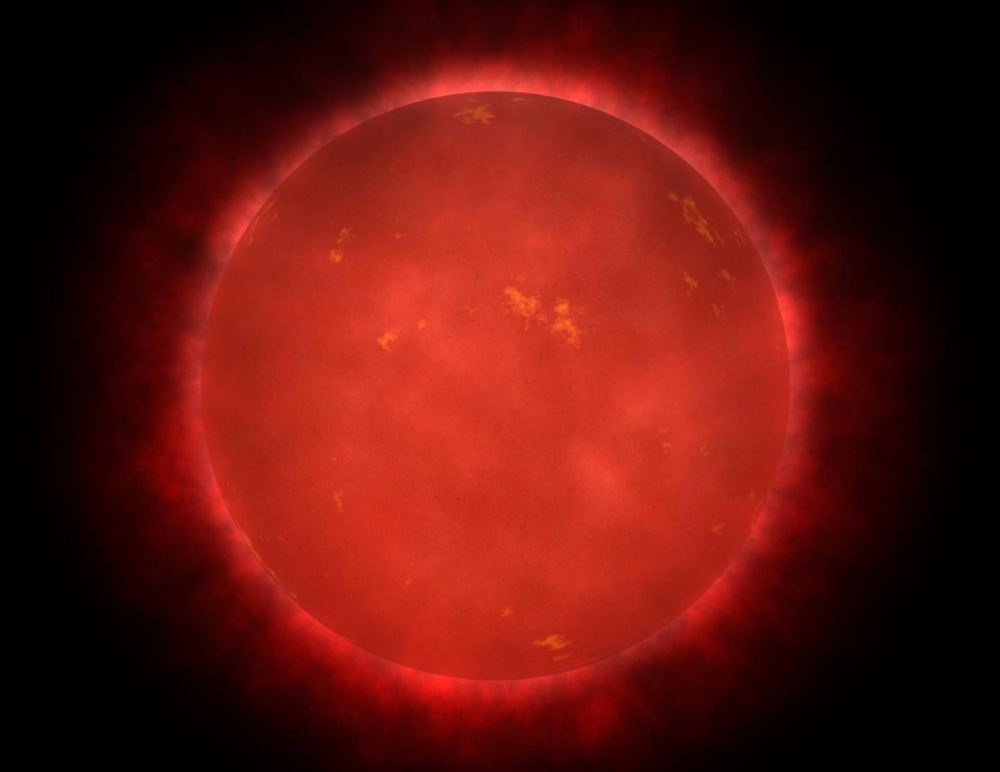Red giant stars are, well, red and giant. But astronomers have always had difficulty estimating their temperatures, due to their complex and turbulent atmospheres. Without an accurate gauge of their temperatures, it’s difficult to tell when they will end their lives in gigantic supernova explosions. Now a team of astronomers have developed a more effective technique for taking the temperature of red giants, based on the amount of iron in the stars.
When the largest stars – ones bigger than 8 times the mass of our sun – near the end of their lives, they swell up to become the brightest red giants in the universe. If placed in our own solar system, these monsters could easy reach to the orbit of Mars, and even beyond. Soon, those giant stars will explode in fantastic supernovae explosions.
Because the outermost layers of their atmospheres are so distant from the central cores, those atmospheres are incredibly turbulent and chaotic, which makes it hard to pin down their temperatures. And without an accurate measurement of their temperatures, it’s difficult to tell exactly when a particular star will go supernova.
A team of Japanese researchers have developed a new, more accurate, technique based on the presence of iron in the stellar atmospheres.
“In order to measure the temperature of red supergiants, we needed to find a visible, or spectral, property that was not affected by their complex upper atmospheres,” said graduate student Daisuke Taniguchi from the Department of Astronomy at the University of Tokyo, and the lead author of a new study investigating red giant temperatures. “Chemical signatures known as absorption lines were the ideal candidates, but there was no single line that revealed the temperature alone. However, by looking at the ratio of two different but related lines — those of iron — we found the ratio itself related to temperature. And it did so in a consistent and predictable way.”
Iron inside the red giants absorbs some of the light emitted by the star at different wavelengths, and the researchers found that by taking the ratio of the strength of absorption for two different wavelengths (or “lines”), they could get a very clear measurement of the red giant temperature.
With a more secure temperature measurement, astronomers can now do a much better job of predicting the remaining lifetime of these giants.
“We still have much to learn about supernovae and related objects and phenomena, but I think this research will help astronomers fill in some of the blanks,” said Taniguchi. “The giant star Betelgeuse (on Orion’s shoulder) could go supernova in our lifetimes; in 2019 and 2020 it dimmed unexpectedly. It would be fascinating if we were able to predict if and when it might go supernova. I hope our new technique contributes to this endeavor and more.”

